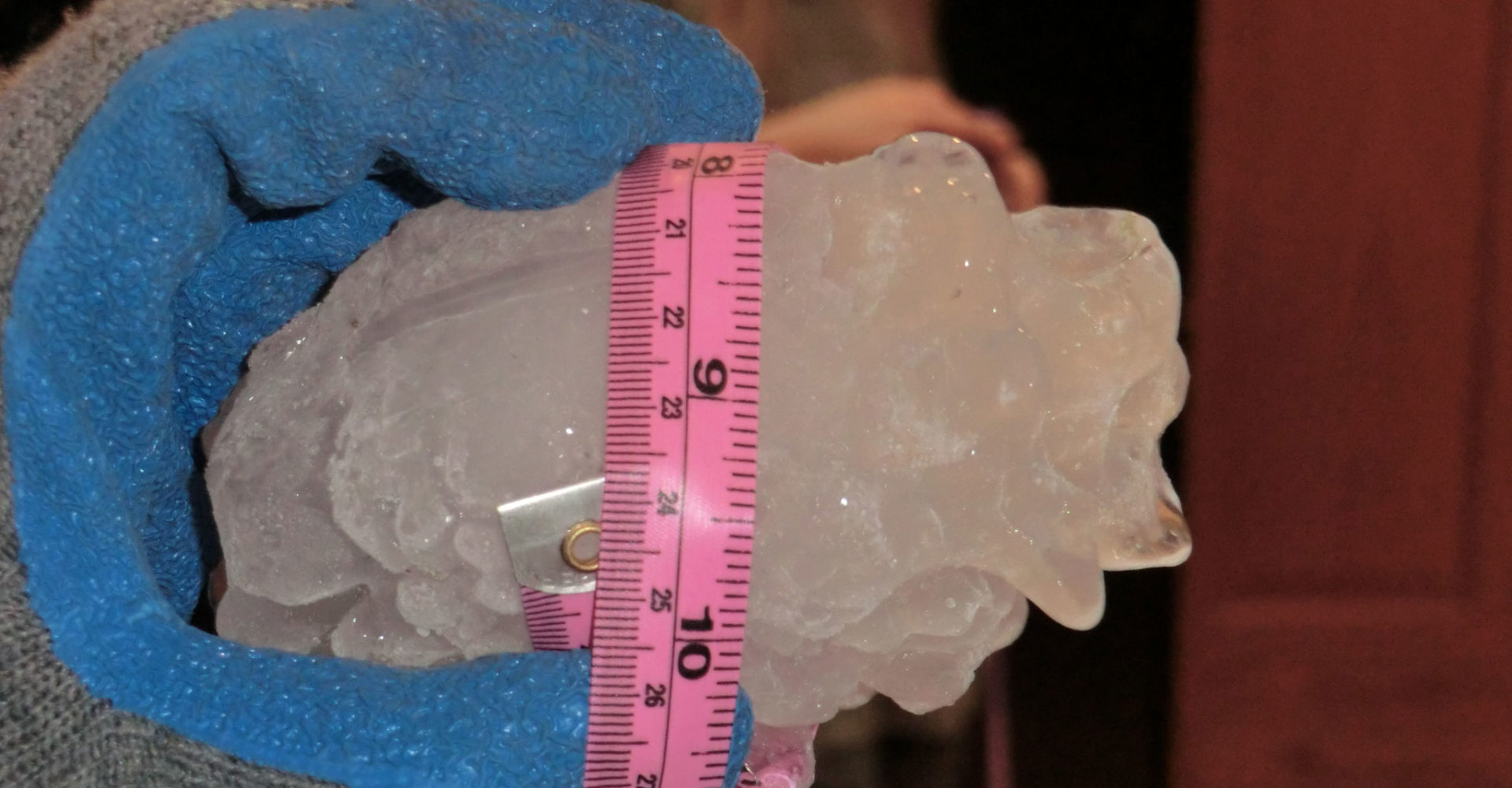
The largest hailstone recorded in Colorado state history fell Aug. 13 near Bethune. Credit: Colorado Climate Center
The weather and climate experts at the Colorado Climate Center occasionally get the exciting task of marking a new state record. This past year was a triple threat: Climatologists have just certified the largest hailstone, highest temperature, and lowest atmospheric pressure ever recorded in the state’s record-keeping history, which goes back to the 1870s.
Thanks to careful vetting by a “State Climate Extremes Committee” convened by Colorado State Climatologist Russ Schumacher earlier this year, the three records are in the books as of last week. The Colorado Climate Center, part of CSU’s Department of Atmospheric Science, is the state’s designated climate office that collects data, monitors climate, conducts research and provides public-facing expertise to scientists, educators, the media and the general public.
Largest hailstone
According to now-official Colorado Climate Center records, the largest-ever recorded hailstone fell Aug. 13 near Bethune, Colorado. It measured 4.83 inches in diameter and weighed 8.5 ounces. The old record, though unofficial, stood at 4.5 inches in diameter.
“There’s a bit of luck that goes into capturing these records,” said Schumacher, an associate professor in atmospheric science who researches extreme weather. “Someone has to find it, and preserve it by putting it in the freezer, like this family did.” It is all but certain larger hail has fallen at other times and places but melted before anyone could collect it, he added.
The new hail record for Colorado has been certified by the National Centers for Environmental Information, which is the National Weather Service and National Oceanic and Atmospheric Administration’s official repository for climatic data.
Back in August, the family on whose property the hailstone fell invited the State Weather Extremes Committee to their home to make measurements. Schumacher, Assistant State Climatologist Becky Bolinger, and representatives from NOAA were among those to make the trek, calipers and tape measures in tow.
The hailstone is now in a freezer at the National Center for Atmospheric Research in Boulder.
Hottest day
The highest temperature record – 115 degrees Fahrenheit – observed at the John Martin Reservoir near Las Animas, was recorded on July 20. It beat the previous record, which had stood since 1933, by 1 degree. Making the new record stick took a little more doing, according to Schumacher.
That’s because the thermograph that made the original measurement only records up to 110 degrees, though observers reported a 115-degree day. “It was literally off the charts,” Schumacher said. So he and others at the climate center borrowed the thermograph and used an oven in CSU’s Engineering Building to recreate the temperature conditions, ensuring the device could accurately read 115 degrees.
“We’re confident the instrument was working properly,” Schumacher said.
Bomb cyclone
The lowest atmospheric pressure record, 970.4 millibars, was observed in Lamar on March 13 during the famed “bomb cyclone.” It beat the previous record of 975 millibars, also recorded in Lamar, back in March 1973. The National Centers for Environmental Information don’t keep records for atmospheric pressure – at least not yet – so the bomb cyclone pressure drop will remain a state record only.